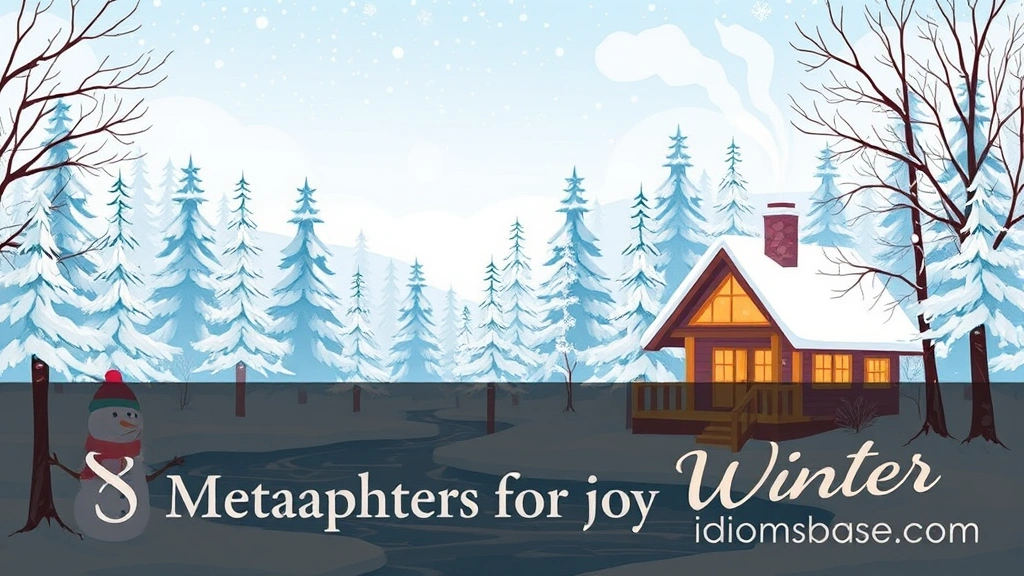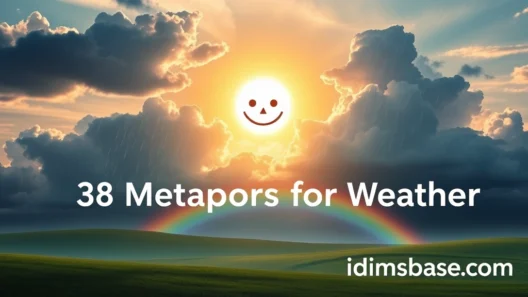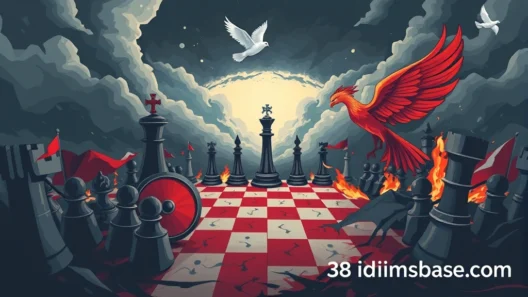As the crisp air bites at your nose and the world outside transforms into a wonderland of white, have you ever stopped to think about how we describe this magical, sometimes challenging, season? Winter isn't just about snow and ice; it's a profound experience, a time of quiet reflection, stark beauty, and often, a test of resilience. And what better way to capture its multifaceted nature than through the power of metaphor?
Metaphors are like secret keys that unlock deeper understanding, allowing us to see familiar things in new, exciting ways. They paint vivid pictures in our minds, transforming abstract ideas into tangible images. In this article, we're going to dive into a treasure trove of 38 incredible metaphors for winter, exploring how this season can be seen through countless lenses – from a slumbering giant to a silent storyteller. Get ready to awaken your imagination and perhaps, even find a new favorite way to describe the chill in the air!
The Many Faces of Winter: 38 Metaphors to Spark Your Imagination
Winter is a season of contrasts, capable of inspiring both awe and introspection. These metaphors capture its diverse essence, offering fresh perspectives on its beauty, its challenges, and its quiet power.
Winter as a Living Entity
Imagine winter not just as a period on the calendar, but as a character with its own personality and actions.
- Winter is an old man, stooped and weary. This metaphor evokes the slow, heavy feeling of deep winter, hinting at its age-old presence.
- Winter is a sleeping giant, dreaming of spring. It suggests a period of dormancy, a pause before awakening.
- Winter is a painter, brushing the world in shades of white. This highlights the transformative beauty of snow and ice.
- Winter is a sculptor, carving mountains of snow and ice. It emphasizes the powerful, shaping force of the season.
- Winter is a stern teacher, testing our resilience. It points to the harsh lessons and challenges winter can bring.
- Winter is a silent storyteller, etching tales on frosted panes. Imagine the intricate patterns on windows as tiny narratives.
- Winter is a queen, reigning over a frozen kingdom. This gives winter a regal, powerful, and majestic presence.
- Winter is a hungry wolf, howling at the door. This conveys the fierce, biting cold and the wildness of the season.
- Winter is a gentle nurse, tucking the earth into bed. A more comforting image, suggesting rest and protection.
- Winter is a magician, transforming landscapes with a wave of its wand. Think of how quickly a snowy scene can appear.
Winter as a Force of Nature
These metaphors focus on the raw, untamed power and impact of winter.
- Winter is a blanket, muffling the world in silence. The snow absorbs sound, creating a quiet, hushed atmosphere.
- Winter is a crystal palace, shimmering under the sun. This emphasizes the sparkling beauty of ice and snow.
- Winter is a deep breath, held before the world exhales spring. A moment of suspension, a pause.
- Winter is a fortress, protecting the dormant seeds below. It acts as a shield for life waiting to re-emerge.
- Winter is a crisp sheet of paper, waiting for new footprints. A fresh start, a blank canvas.
- Winter is a slow waltz, danced by snowflakes. A beautiful, elegant, and gentle movement.
- Winter is a cold embrace, holding everything close. A feeling of being enveloped by the chill.
- Winter is a delicate lace, spun by frost. The intricate patterns of ice on windows or branches.
- Winter is a grand symphony, played by the wind. The varied sounds of winter storms and breezes.
- Winter is a powerful broom, sweeping away the old. A sense of cleansing and renewal.
Winter as a State of Being or Emotion

Sometimes, winter reflects inner states or evokes specific feelings.
- Winter is a long sigh, after a busy year. A feeling of release, exhaustion, and quiet.
- Winter is a quiet library, inviting contemplation. A time for introspection and reading.
- Winter is a blank canvas, awaiting the colors of spring. A period of potential and anticipation.
- Winter is a hidden gem, revealing its beauty to those who look closely. Its subtle wonders.
- Winter is a whispered secret, shared between the trees. The hushed, intimate feeling of a snowy forest.
- Winter is a deep sleep, from which life will awaken renewed. The restorative power of dormancy.
- Winter is a time capsule, preserving moments in ice. Memories frozen in time.
- Winter is a mirror, reflecting our need for warmth and comfort. It highlights what we crave.
- Winter is a challenge, sharpening our senses. The need to be alert and prepared.
- Winter is a promise, of new beginnings in spring. The cyclical nature of life.
Winter in Abstract & Literary Terms
These metaphors offer more abstract or poetic interpretations of the season.
- Winter is a prelude to spring, a necessary pause. It sets the stage for what's to come.
- Winter is the earth's exhale, a breath of cold air. A natural, organic process.
- Winter is a reset button for the world. A chance to clear the slate.
- Winter is nature's minimalist art exhibit. Stripped-down beauty, less is more.
- Winter is a quiet conversation between frost and light. The interplay of elements.
- Winter is the world in grayscale, waiting for color. A subdued palette.
- Winter is a time for stories, told by the fire's glow. The cozy, narrative aspect of the season.
- Winter is a testament to endurance. Its ability to persist and overcome.
Key Takeaways
Exploring metaphors for winter isn't just a fun linguistic exercise; it deepens our appreciation for this often-misunderstood season. Here's what we've learned:
- Winter is rich in imagery: From a "sleeping giant" to a "crystal palace," the metaphors highlight winter's diverse visual and sensory aspects.
- It evokes varied emotions: Winter can be seen as "stern," "gentle," "challenging," or "comforting," reflecting our complex relationship with it.
- Metaphors reveal deeper meanings: They help us understand winter as a period of rest, renewal, testing, and profound beauty, rather than just cold weather.
- Language shapes perception: The way we describe winter influences how we feel about it and interact with it.

By using these metaphors, you can add richness and depth to your writing, conversations, and even your personal reflections on the season.
Frequently Asked Questions About Winter Metaphors
You might be wondering more about why and how we use these clever comparisons. Let's dig into some common questions!
Q1: What is a metaphor, and how is it different from a simile?
A metaphor is a figure of speech that directly compares two unlike things, stating that one thing is another (e.g., "Winter is a sleeping giant"). It creates a strong, vivid image by equating the two.
A simile, on the other hand, also compares two unlike things but uses "like" or "as" (e.g., "Winter is like an old man" or "The snow is as soft as a blanket"). Similes make the comparison explicit, while metaphors are more direct and often more impactful. Both are fantastic tools for descriptive language!
Q2: Why are metaphors important in writing and everyday language?
Metaphors are incredibly powerful because they:
- Make abstract ideas concrete: They help us understand complex concepts by relating them to something familiar.
- Add vividness and imagery: They paint mental pictures, making descriptions more engaging and memorable.
- Evoke emotion: They can convey feelings and moods more effectively than literal language.
- Spark creativity: They encourage us to think outside the box and see connections between seemingly unrelated things.
- Enhance communication: They allow us to express ourselves more richly and precisely.

Think about it: saying "Winter is a hungry wolf" tells you so much more about its fierce nature than just saying "Winter is cold."
Q3: Can I create my own metaphors for winter?
Absolutely! That's the beauty of language. To create your own, think about:
- What aspect of winter do you want to highlight? Is it the cold, the quiet, the beauty, the challenge, the rest?
- What unrelated thing shares a similar quality or characteristic? For example, if you want to highlight winter's quietness, what else is quiet? A library? A whisper?
- Phrase it as if one thing is the other. For instance, if winter is quiet like a library, you might say, "Winter is a quiet library, inviting contemplation."
Don't be afraid to experiment and play with words. The more unique and surprising your comparison, the more effective your metaphor can be!
Q4: How can using these metaphors improve my writing?
Incorporating metaphors into your writing can significantly elevate its quality by:
- Making it more engaging: Readers are drawn to vivid and imaginative language.
- Showing, not just telling: Instead of saying "winter is harsh," you can say "winter is a stern teacher," which gives a clearer, more evocative picture.
- Adding depth and nuance: Metaphors allow you to convey multiple layers of meaning in a concise way.
- Creating a unique voice: Your choice of metaphors can reflect your personal style and perspective.
Whether you're writing a poem, a story, a blog post, or just a description for a friend, a well-placed metaphor can make your words truly shine.
Q5: Are there any cultural differences in how winter is perceived or metaphorized?
Yes, absolutely! Winter's perception varies greatly depending on culture, geography, and historical context. In places where winter is extremely harsh and long, metaphors might focus on survival, endurance, or even struggle. In cultures where winter brings beautiful snow and opportunities for specific activities, metaphors might highlight joy, beauty, and renewal.
For example, a culture experiencing mild winters might not have metaphors for "hungry wolves" but might focus more on "gentle nurses." Similarly, ancient cultures might have tied winter metaphors to specific deities or myths related to death and rebirth. This diversity makes the study of metaphors even more fascinating!
Conclusion
We hope this journey through 38 unique metaphors for winter has sparked your imagination and given you a fresh perspective on this incredible season. From the quiet majesty of a "sleeping giant" to the delicate beauty of "frozen lace," winter truly is a canvas for poetic expression.
Now it's your turn! Which metaphor resonated most with you? Can you think of a new one that perfectly captures the essence of winter for you? Share your thoughts in the comments below, and let's continue this delightful exploration of language and the seasons together!






